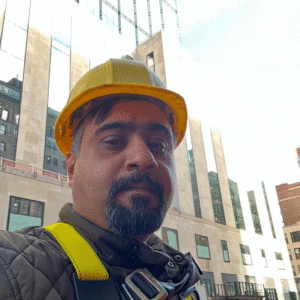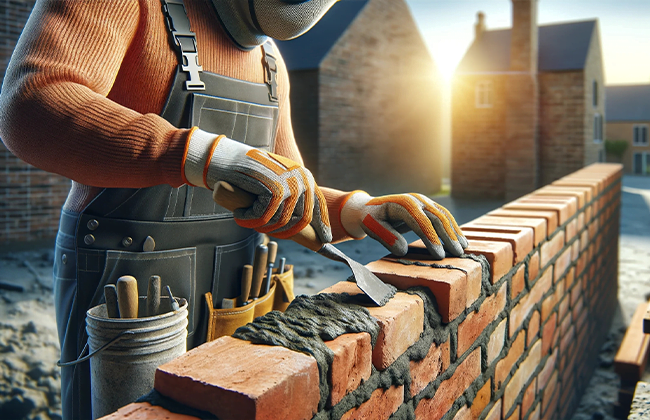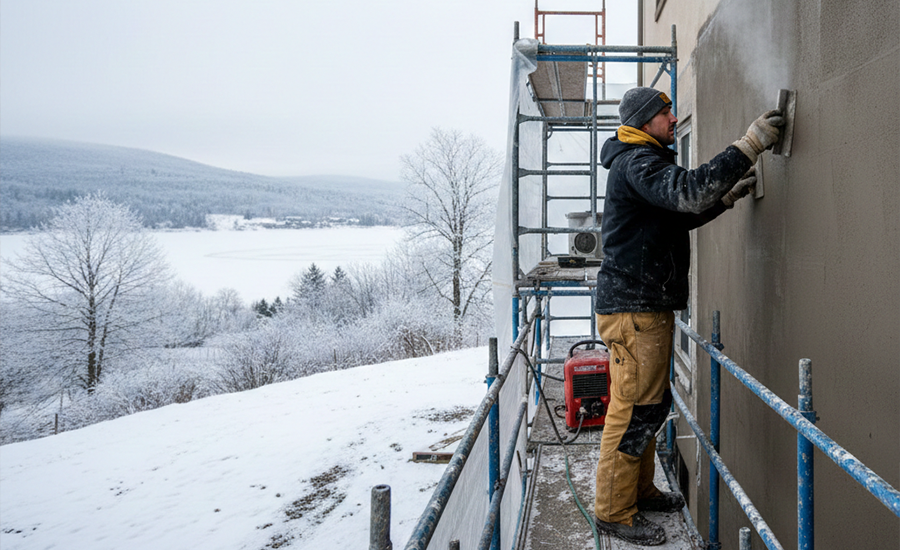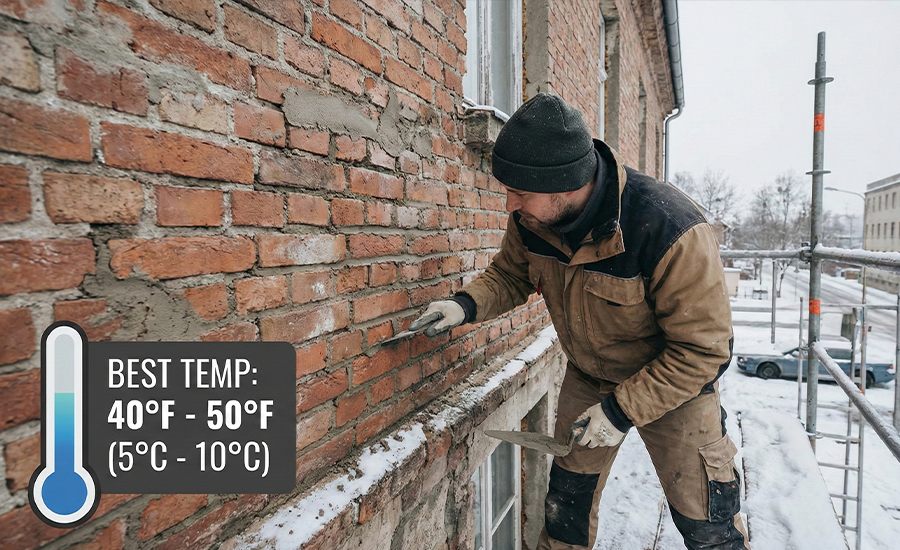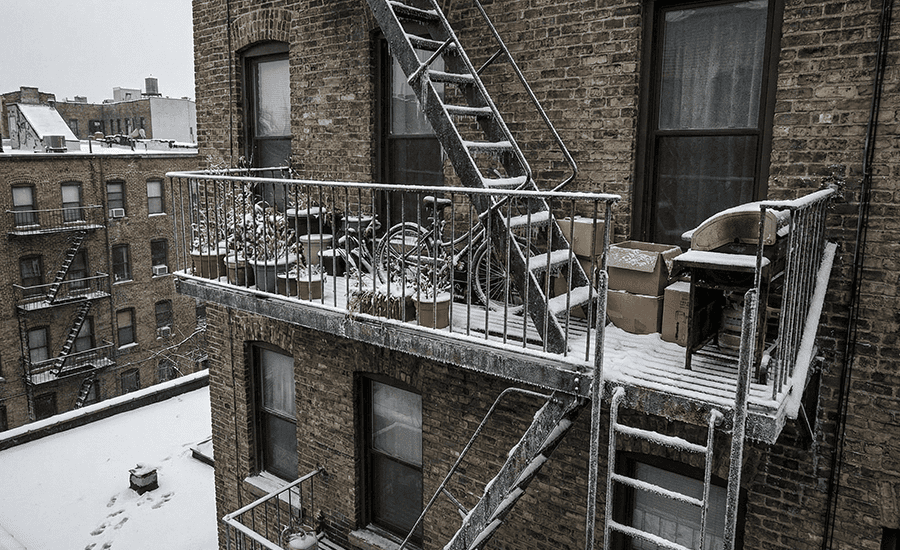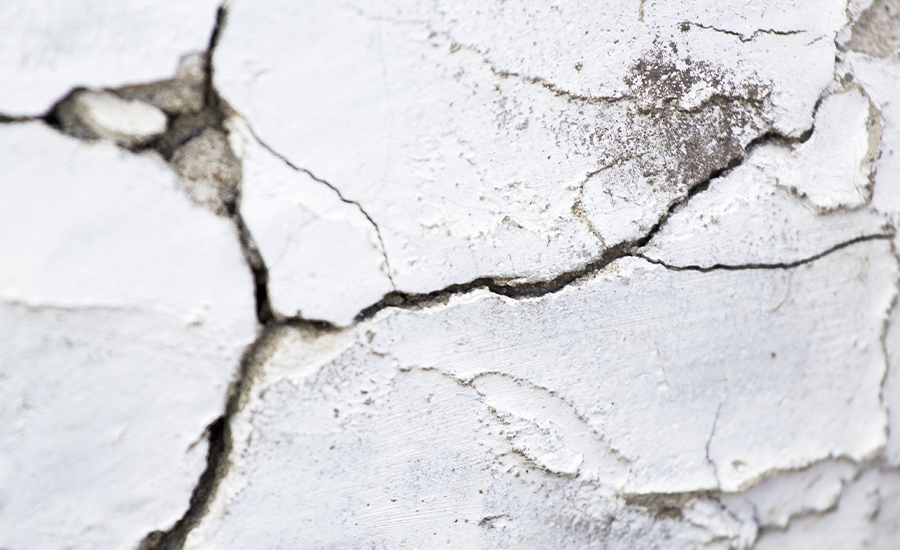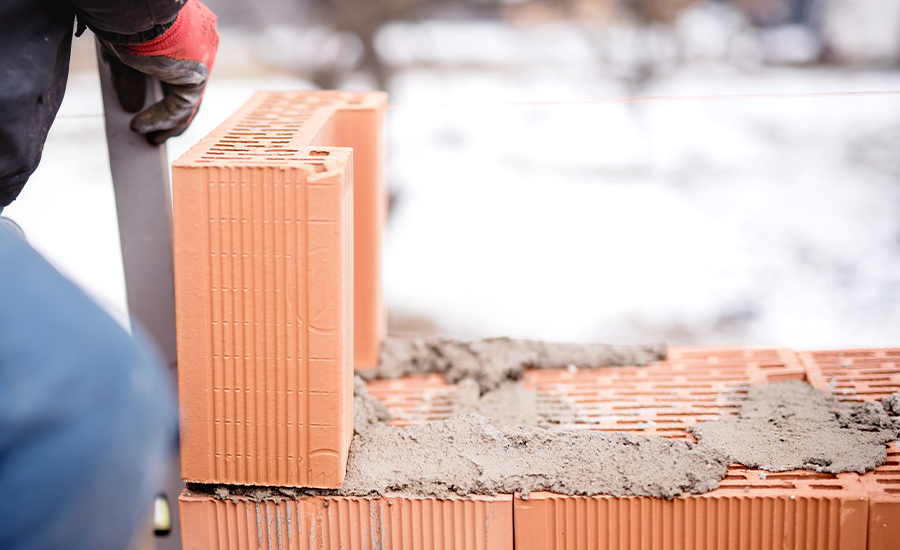Repointing is essential for maintaining the structural integrity and aesthetic value of masonry buildings. Over time, the mortar that holds bricks together deteriorates due to weathering and wear, necessitating what is known as repointing. This process involves removing old mortar and replacing it with new, ensuring that the building remains safe, sound, and visually appealing. Understanding what is repointing and recognizing when it’s required can save property owners significant repair costs in the future.
What is Repointing?
Repointing is the essential process of renewing the pointing, which is the external part of mortar joints, in masonry construction. This technique involves removing the old, deteriorating mortar from the joints between bricks or stones and filling them with fresh mortar. Over time, exposure to various weather conditions and environmental factors causes the mortar to degrade, compromising both the aesthetic appeal and structural integrity of the building. Repointing helps restore these aspects, ensuring the masonry remains durable and intact.
Why is Repointing Necessary?
Repointing is not just about improving the appearance of a building; it plays a crucial role in its overall maintenance and longevity. Here’s why repointing is necessary:
1. Structural Integrity
By replacing worn-out mortar, repointing helps maintain the structural stability of a building. Mortar acts as a cushion between bricks or stones, distributing loads and stresses evenly. Over time, as mortar weakens, the masonry units can begin to move, leading to cracks and instability.
2. Weather Resistance
Properly maintained mortar joints are crucial for preventing water ingress. Water that seeps into cracked or crumbling mortar can cause significant damage, especially in freeze-thaw climates where the water expands as it freezes, exacerbating the cracks. Repointing these joints helps keep the building dry and prevents moisture-related issues such as mold, mildew, and further masonry damage.
3. Energy Efficiency
Damaged mortar joints can lead to increased air infiltration, which affects the thermal efficiency of a building. By sealing gaps in the masonry, repointing can help improve a building’s ability to maintain a consistent internal temperature, thereby reducing energy costs associated with heating and cooling.
4. Preservation of Property Value
A well-maintained building not only looks better but also holds its value better over time. Repointing is a key aspect of building maintenance that can significantly impact property value, particularly for historic buildings where authenticity and aesthetic integrity are essential.
Legal and Safety Compliance
In some cases, maintaining the masonry of a building is not just advisable but legally required, especially in historic districts or for buildings that are listed as historic landmarks. Additionally, deteriorating masonry can pose safety risks to occupants and passersby due to the potential for falling debris.
Repointing is a necessary maintenance practice that ensures the longevity, beauty, and safety of masonry structures. It’s a specialized skill that can significantly impact the performance and appearance of a building, making it an essential consideration for any masonry maintenance plan.
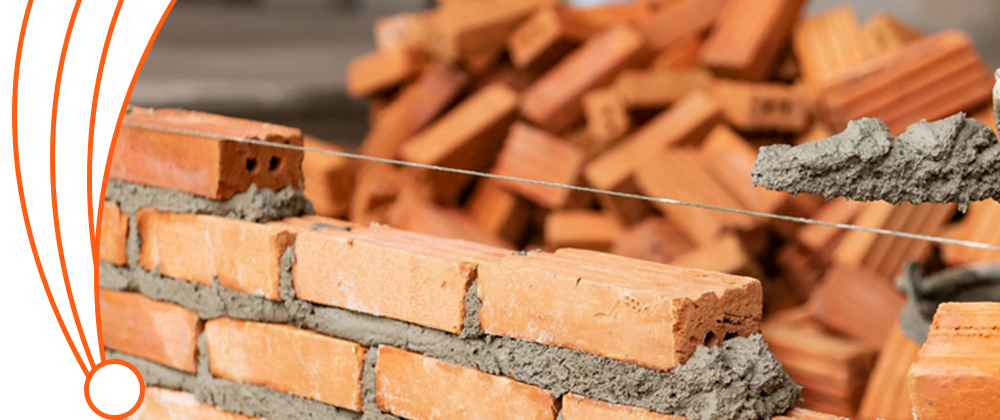
Understanding Mortar and Its Role in Masonry
Composition of Mortar:
Mortar is fundamentally a blend of binding materials—commonly cement, lime, or a combination of both—with sand and water. This concoction serves as the glue that holds masonry units, such as bricks and stones, together. The choice of mortar composition can vary based on the structural requirements and the historical significance of the building. For instance, older structures might require lime mortar to allow for better breathability, which prevents trapped moisture and subsequent damage.
Functions of Mortar:
The role of mortar extends beyond merely adhering masonry units. Here are some of its key functions:
- Structural Integrity: Mortar contributes significantly to the structural integrity of a building. It distributes loads evenly across the structure, reducing stress on individual stones or bricks, which helps in maintaining the building’s stability over time.
- Thermal Insulation: Mortar plays an essential role in insulating buildings. The correct mix can help regulate indoor temperatures, contributing to a building’s energy efficiency. This insulation capacity helps in keeping interiors cool in summer and warm in winter.
- Soundproofing: Another beneficial property of mortar is its ability to dampen sound. The density and composition of mortar can significantly influence its soundproofing capabilities, thereby enhancing the acoustic comfort of living spaces.
- Moisture Resistance: Mortar is crucial in protecting the building from moisture ingress. Properly formulated and applied mortar seals the gaps between masonry units, preventing water and dampness from penetrating the walls. This is particularly important for the longevity of the structure as moisture can lead to severe issues like mold growth, structural weakening, and damage to interior finishes.
- Aesthetic Function: Apart from its structural and functional roles, mortar also contributes to the aesthetic appearance of masonry work. A well-mixed and applied mortar can enhance the visual coherence of the stonework or brickwork, influencing the overall appeal of the building’s facade.
Understanding the composition and functions of mortar is crucial for anyone involved in building construction or maintenance. It not only ensures the durability and functionality of the structure but also plays a significant role in its energy efficiency and aesthetic appeal. Proper attention to the selection and application of mortar can lead to more sustainable and enduring masonry work.
Signs That Your Building Needs Repointing
When it comes to maintaining the integrity of masonry structures, repointing is not just an aesthetic upgrade; it’s a necessary restoration to ensure safety and longevity. Recognizing when your building needs this crucial maintenance can save you from more significant repairs in the future. Here are some clear indicators that it’s time to consider repointing:
1. Crumbling or Cracking Mortar:
The most obvious sign that repointing is needed is when the mortar between bricks begins to crumble or show cracks. As mortar ages, it loses its bonding ability and starts to deteriorate due to exposure to environmental factors such as rain, snow, and cycles of freezing and thawing. Once you notice these signs, it’s crucial to address them promptly to prevent further deterioration.
2. Loose Bricks or Stones:
If the bricks or stones of your building are starting to feel loose or you can see noticeable gaps where the mortar should be, it’s a strong indication that the mortar has weakened significantly. This loosening not only compromises the structural integrity of the wall but also poses safety risks, as loose bricks can eventually fall out.
3. Water Infiltration Visible on Interior Walls:
Water entering through gaps in the masonry can lead to visible signs of moisture inside the building. If you notice water stains, dampness on the walls, or peeling paint, especially after rainfall, these are signs that the existing mortar is no longer waterproof. This moisture can also lead to mold growth, which poses health risks and further damages interior finishes.
4. Damp Patches on Walls, Especially After Rain:
Similar to water infiltration, damp patches on the walls after rain are a telltale sign that water is seeping through weakened mortar joints. These damp patches may not only indicate a need for repointing but also a comprehensive check for potential leaks in other areas of the building’s exterior.
Identifying these signs early and responding with appropriate repointing work can significantly extend your building’s lifespan and enhance its overall safety. Additionally, it maintains the aesthetic appearance of the structure, which is particularly important for historical buildings or any property where curb appeal is valued. By keeping an eye out for these symptoms, building owners can take proactive steps to manage their property’s upkeep effectively.
The Repointing Process: Step-by-Step
Repointing is a detailed and meticulous process that, when done correctly, not only preserves the aesthetic value of a building but also reinforces its structural integrity. Here’s a breakdown of the steps involved:
1. Inspection and Assessment:
The first step in the repointing process involves a thorough inspection of the masonry. A professional examines the condition of the mortar and identifies areas where repair is needed. This assessment helps in planning the extent of repointing required and determining the specific challenges that might arise due to the building’s age, design, or the type of masonry materials used.
2. Removing Old Mortar:
Once the areas needing work are identified, the next step is the careful removal of the old, deteriorated mortar. This is typically done using tools like chisels and grinders. It’s crucial to remove the mortar to a sufficient depth—generally about twice the width of the joint—to ensure the new mortar can bond effectively. Great care must be taken to avoid damaging the masonry units during this process.
3. Preparing the Mortar Mix:
Choosing the right mortar mix is essential for the success of the repointing job. The new mortar must match the original in terms of color, texture, and strength to ensure it blends in well and performs its structural role. This often involves testing and adjusting the mix to achieve the right properties, reflecting the unique requirements of the building’s masonry.
4. Filling the Joints:
With the old mortar removed and the right mix prepared, the next step is to fill the joints with new mortar. This is done carefully and methodically, applying the mortar in layers to ensure thorough coverage and compaction. A pointing trowel is used to press the mortar into the joints, making sure there are no air pockets or gaps. The technique used here can vary depending on the type of joints and the finish desired.
5. Curing:
After the joints are filled, the new mortar must be allowed to cure properly to achieve full strength and durability. Curing involves keeping the mortar damp for a period of time, usually a few days. This prevents the mortar from drying out too quickly, which can lead to shrinkage and cracking. Proper curing is critical to ensure that the repointed areas will withstand the elements and last for many years.
By following these steps, you ensure that the repointing work restores the building’s beauty and structural soundness, effectively protecting it against future damage. Each stage in this process requires precision and patience, highlighting why repointing should often be handled by skilled professionals, especially in complex or large-scale projects.

DIY Repointing Tips
Repointing your home can be a rewarding DIY project if done correctly. It not only enhances the look of your home but also bolsters its weather resistance and structural integrity. Here are some key tips to help you achieve professional-quality results:
Match the Mortar Mix:
One of the most critical aspects of repointing is ensuring that the new mortar matches the old one in strength, color, and thermal characteristics. This compatibility is vital for the durability and aesthetic consistency of your masonry. You might need to experiment with different mixes or consult with a professional to find the right blend that resembles the existing mortar.
Use the Right Tools:
Having the right tools can make a significant difference in the ease and success of your repointing project. Essential tools include:
- Pointing trowel: For applying and shaping the mortar in the joints.
- Masonry chisel and hammer: For removing old mortar without damaging the bricks.
- Wire brush: For cleaning out loose debris from the joints after removing the old mortar.
Ensure Safety:
Safety should always be a priority when undertaking construction tasks. When repointing:
- Wear protective gloves: To protect your hands from sharp edges and abrasive materials.
- Use eye protection: To prevent dust and debris from entering your eyes, especially when chiseling out old mortar or mixing new mortar.
- Consider a dust mask: Especially if you are working with older mortar that could contain harmful substances like silica.
Consider Weather Conditions:
The weather plays a crucial role in the timing and effectiveness of your repointing project. For the best results:
- Avoid extreme temperatures: Both high heat and freezing temperatures can adversely affect the curing process of the mortar.
- Stay clear of rainy or humid days: Excess moisture can prevent the mortar from setting properly and may lead to weak joints.
- Opt for mild, dry weather: This provides the ideal conditions for the mortar to cure evenly and achieve optimal strength.
By following these tips, you’ll be better equipped to handle the repointing process yourself, ensuring a successful restoration of your home’s masonry. Just remember, while DIY projects can be fulfilling, they also require careful preparation and a willingness to learn from the process. If the project feels overwhelming or beyond your skill level, consulting a professional might be the best course of action.
Hiring Professionals for Repointing

When it comes to repointing, hiring a professional can often be the best decision, especially for large or complex projects. Here’s how you can determine when to hire a professional and what to consider in your selection process:
When to Hire a Professional:
- Complexity of the Job: If your project involves a large area or a historic building where maintaining architectural integrity is crucial, professional expertise is necessary.
- Safety Concerns: High or hard-to-reach areas might require scaffolding or specialized equipment that professionals can handle more safely and efficiently.
- Quality Assurance: Professionals bring a level of precision and durability to the job that is difficult to achieve in DIY projects, ensuring the work lasts longer and protects your investment.
What to Look for in a Masonry Contractor:
- Licensing and Insurance: Ensure the contractor is licensed to perform masonry work in your state and carries insurance. This protects you legally and financially in case of accidents or subpar work.
- Experience with Similar Projects: Look for contractors who have experience with buildings similar to yours, especially if you have a historic property. Experience often translates to a higher quality of workmanship.
- Reputation: Check online reviews, ask for references, and consult with local building associations. A contractor with a solid reputation is likely to deliver better results.
The Importance of References and Previous Work:
- References: Speaking with past clients can provide insights into the contractor’s reliability, quality of work, and ability to stay on schedule and budget. Don’t hesitate to ask for at least three references.
- Portfolio of Previous Work: Reviewing a portfolio allows you to assess the quality and style of the contractor’s work. It can also give you an idea of whether they have tackled projects similar to yours.
Questions to Ask Potential Contractors:
- How do they plan to match the existing mortar?
- What is their projected timeline and workflow for the project?
- Can they provide a detailed quote and contract?
By taking the time to carefully select the right professional for your repointing project, you ensure the longevity and aesthetic appeal of your masonry work. Remember, the goal is not just to fix the immediate issues but to preserve your building for years to come, making it worthwhile to invest in a qualified masonry contractor.
Conclusion
If you’ve come to understand what is repointing and think it’s time your building had this essential maintenance, finding a skilled professional is crucial. Repointing not only restores the appearance of your property but also fortifies its structural stability. If you’re seeking a professional contractor for repointing, don’t hesitate to contact us at (+1) 917-355-8556 for expert services and guidance.
FAQs
Q: What is repointing and when is it necessary?
A: What is repointing? It’s a vital maintenance task where old mortar joints are replaced with new mortar to maintain the structural and aesthetic integrity of masonry. It becomes necessary when signs of deterioration, such as cracking or crumbling mortar, become evident.
Q: How often should what is repointing be done on a building?
A: The frequency of repointing depends on several factors. These include the type of mortar used, the building’s exposure to harsh weather, and the initial construction quality. Generally, it’s advisable to inspect your masonry every 25-30 years.
Q: What advantages does restoring mortar joints offer?
A: Restoring mortar joints, commonly known as repointing, significantly enhances a building’s structure. It prevents moisture penetration that could lead to serious damage. It also improves thermal insulation and helps preserve the building’s original architectural features, adding to its overall value and appeal.
Q: Can I manage mortar restoration on my own, or should I consult a specialist?
A: For small-scale mortar restoration, you might manage on your own if you have some DIY experience. However, for larger or more intricate jobs, it’s wise to engage a specialist. They bring the necessary skills and tools to perform the work correctly and safely, which is crucial for the work’s longevity and safety.
Q: What qualifications should a contractor have for repointing projects?
A: When seeking a contractor for repointing, prioritize those with extensive experience, valid licensing, and positive customer reviews. It’s crucial to review their portfolio of past projects. This ensures they have handled buildings similar to yours and can accurately match the new mortar with the existing one. This maintains the structure’s aesthetic and structural integrity.


